

Left breast implant exchange and capsulectomy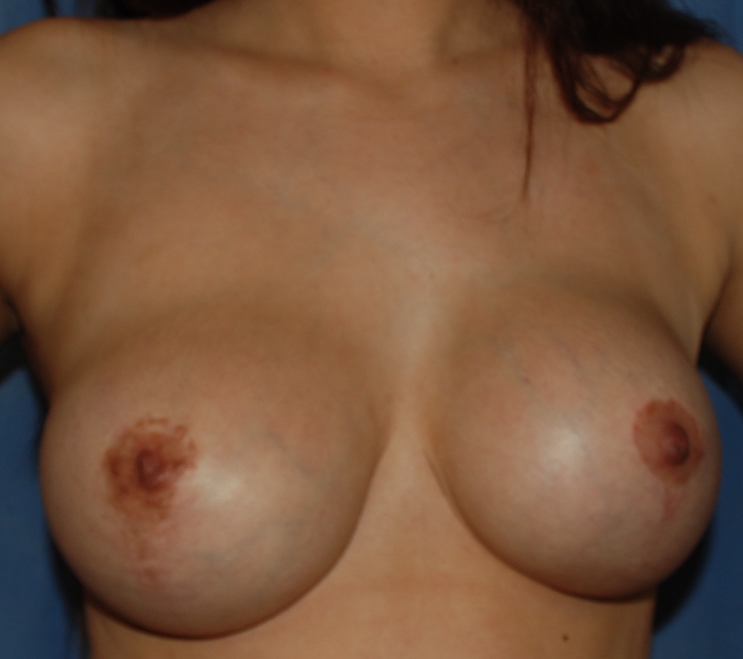
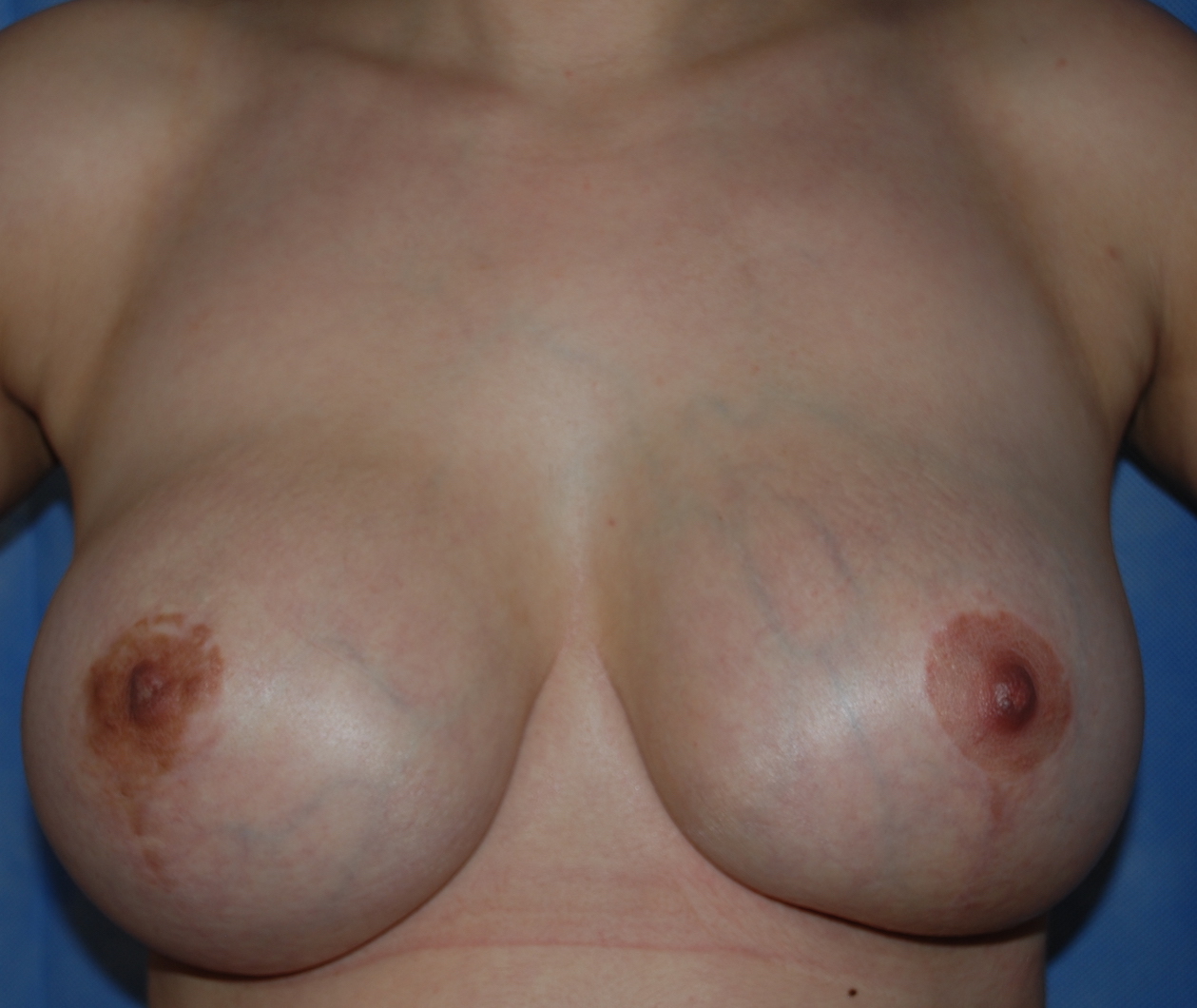
Old implants exchanged, capsule removed and uplift.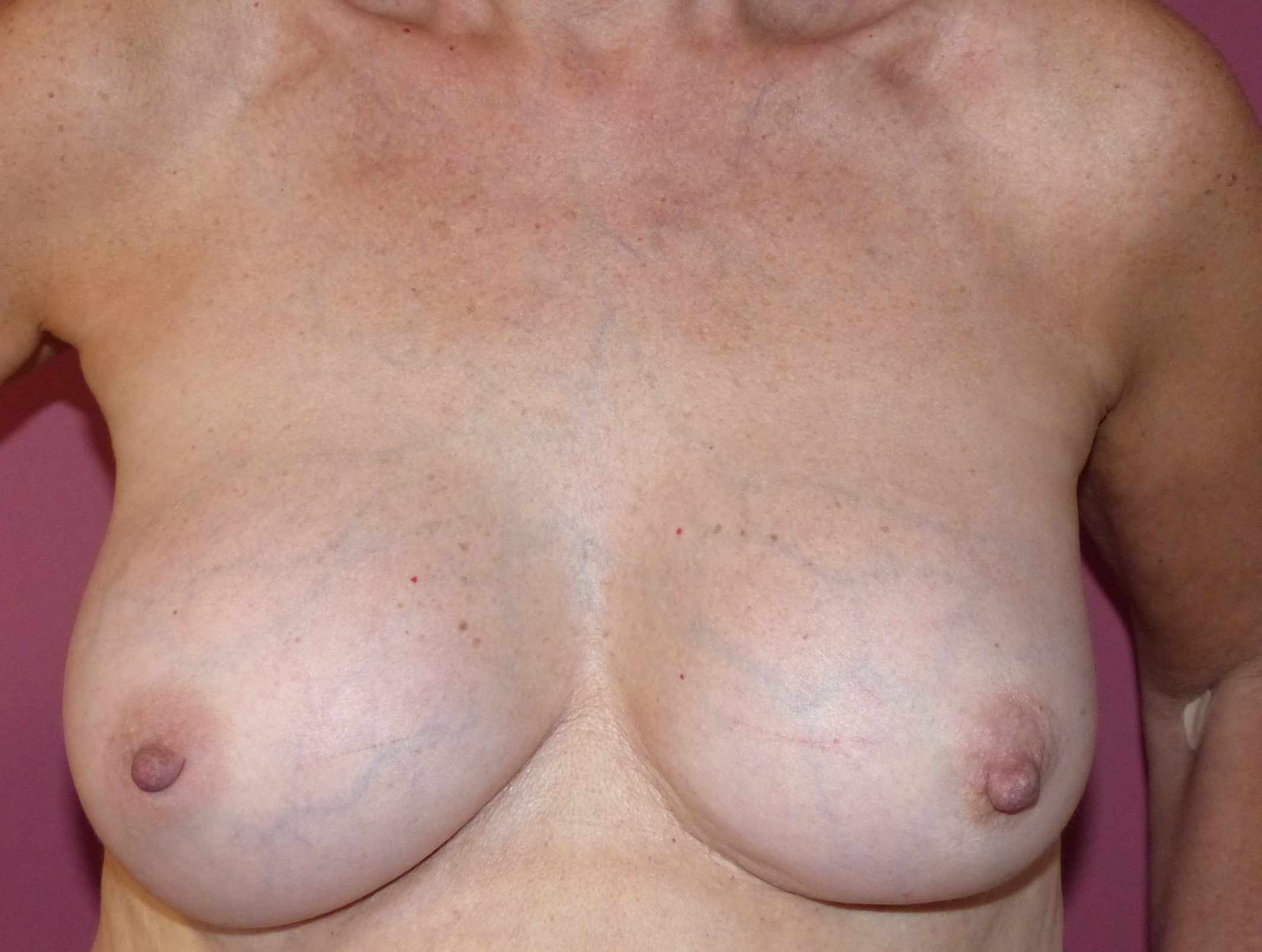
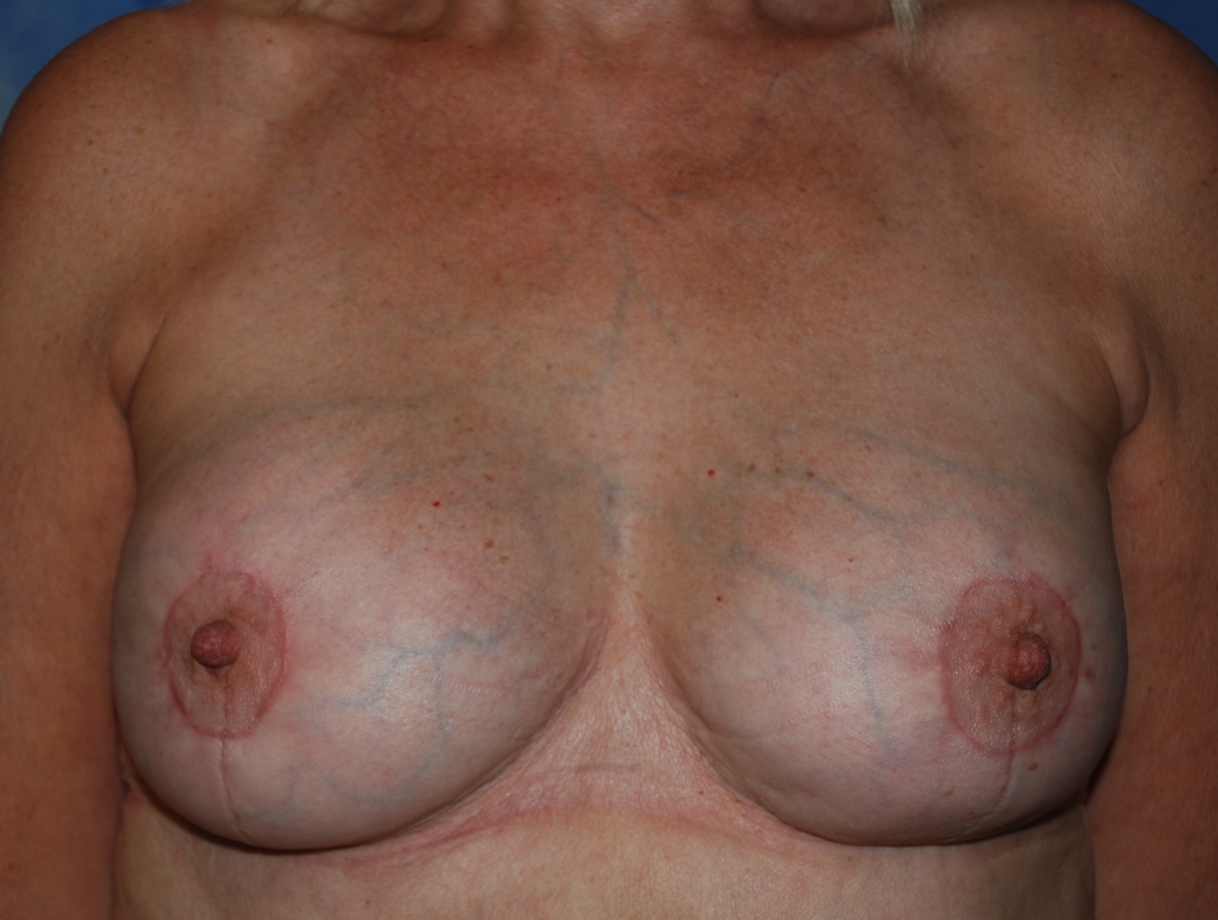
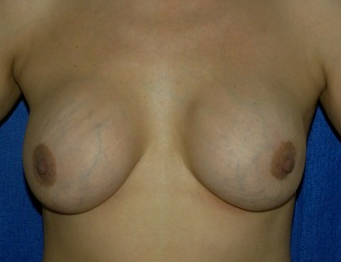
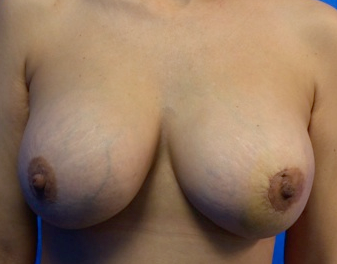
There are several reasons for breast implants to be exchanged. The most common are listed below:
• Wanting to have larger implants
• Change in shape, sometimes associated with pain
• Burst or Leaking Implant
• Previous implantation with a sub-standard implant (PIP implant scandal)
Change in Shape - 'Capsule' Formation
In the years following breast implatation, the shape of the breast changes with time. This is related both to changes which occur with age and is also related to the implant itself and the way your body responds to the implant. Your body makes a very thin envelope 'capsule' around the breast implant and this tightens with time, making the implanted breast firmer and rounder. Occasionally there is pain associated. In most patients this happens very slowly but it may be more rapid or pronounced in others. In order to rectify this problem, the breast implant is exchanged: the old implant is removed, the tight capsule is released and reshaped and a new implant is put in. Usually drainage tubes are left in the breast for a few days but in all other respects the post-operative arrangements are the same as for Breast Implant surgery.
Burst or Leaking Implants
The silicone gel core of an implant can leak out as a result of a significant tear or burst. It is also possible for microscopic holes to develop which allow the gel to 'bleed' from the implant. Both of these problems are increasingly rare with modern implants.
A burst or leaking implant may go entirely unnoticed. Change in shape or fullness or discomfort following an impact to the breast may be experienced. Ruptures may be incidentally diagnosed with a mammogram. MRI or ultrasound scans may be used to help with diagnosis. MRI is more accurate but more expensive and neither of these methods are completely accurate.
Whilst there is no proof that silicone gel is harmful if it leaks it may be absorbed by the lymph nodes and this can cause lumps to develop in the armpit. It is recommended that an implant suspected of rupture or leakage should be replaced. PIP implants were an inferior quality implant which was available some years ago. There has been no conclusive evidence that these are harmful although they have had a higher incidence of rupture and should be replaced if this is suspected. Many women have chosen to have these removed as a matter of course in the absence of demonstrable rupture.
Helpful Information
When you attend for your consultation, it is useful to know what size, shape and type of implant(s) you have, the approximate date of your previous surgery and the position of the implant (under-the-breast or under-the-muscle). This helps with determining which implants to order.
Your previous surgeon or clinic should have provided you with this information and, if you no longer have this, he/she should have retained records. Your current implants may have come with a manufacturers guarantee which could pay for the cost of new implants (although not the surgery).
It is also useful to see reports of any scans you have already had on the breasts.
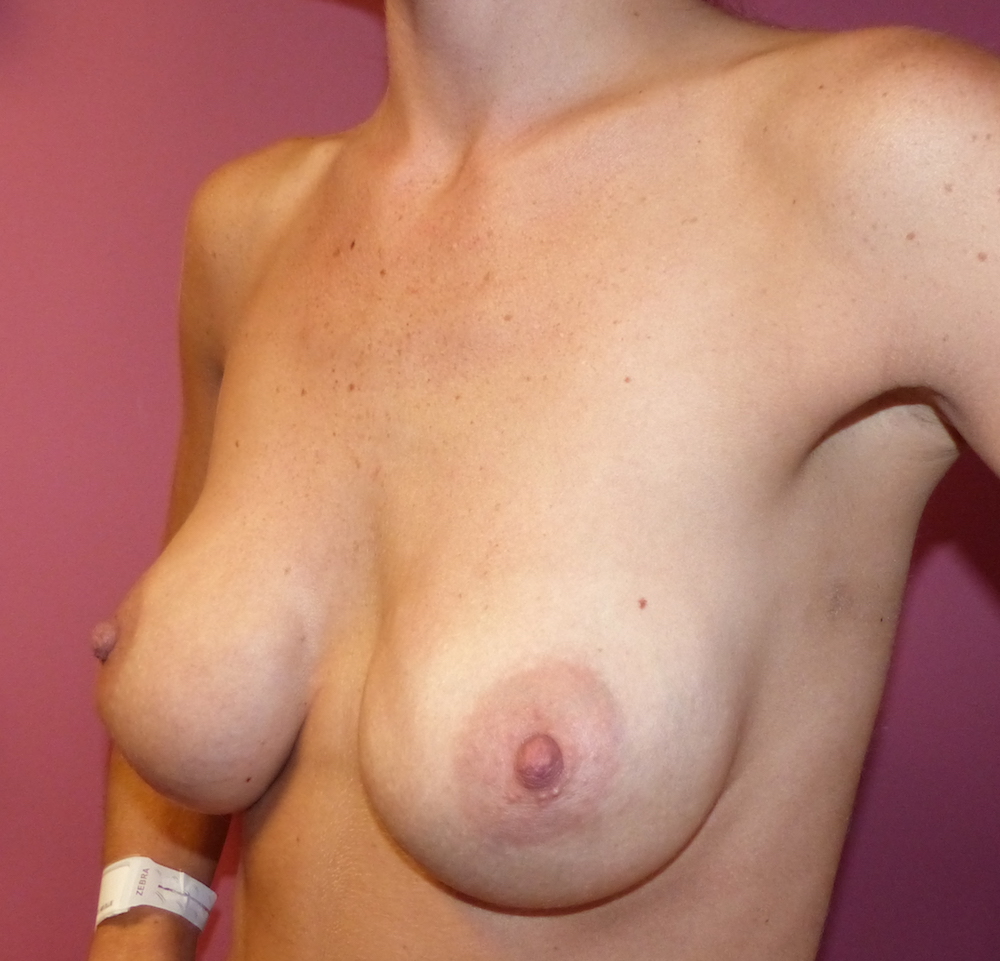
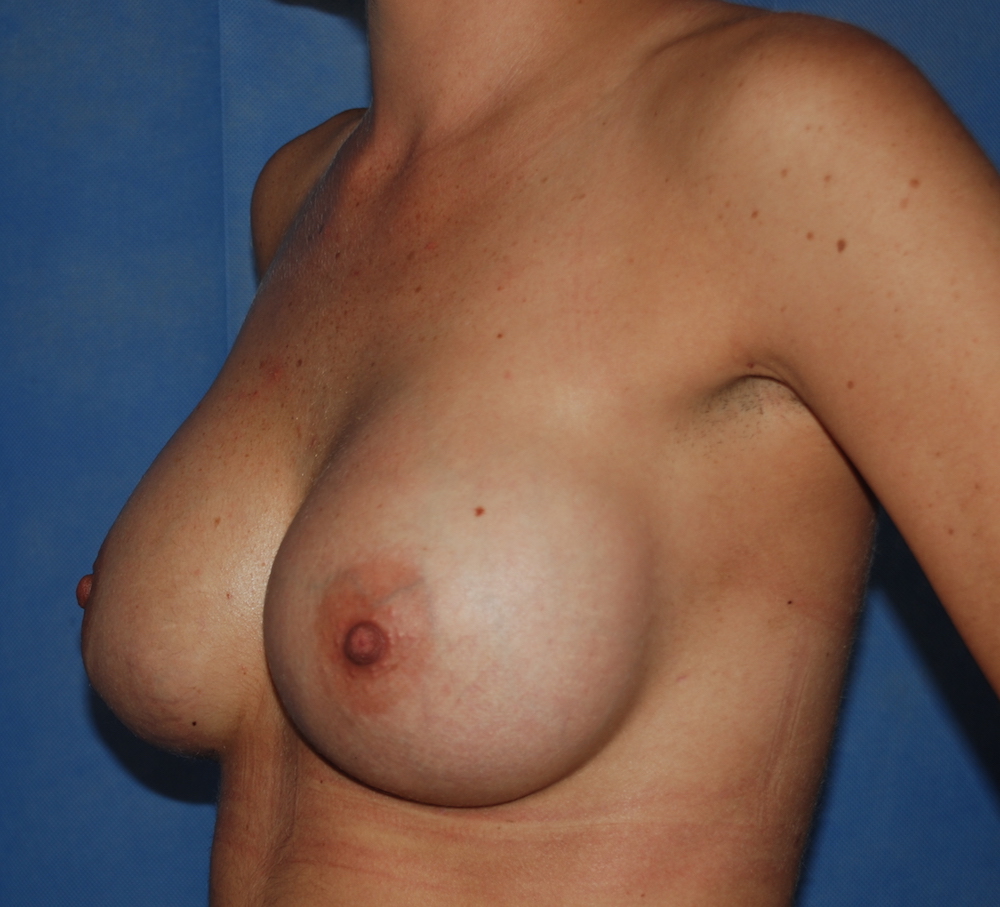
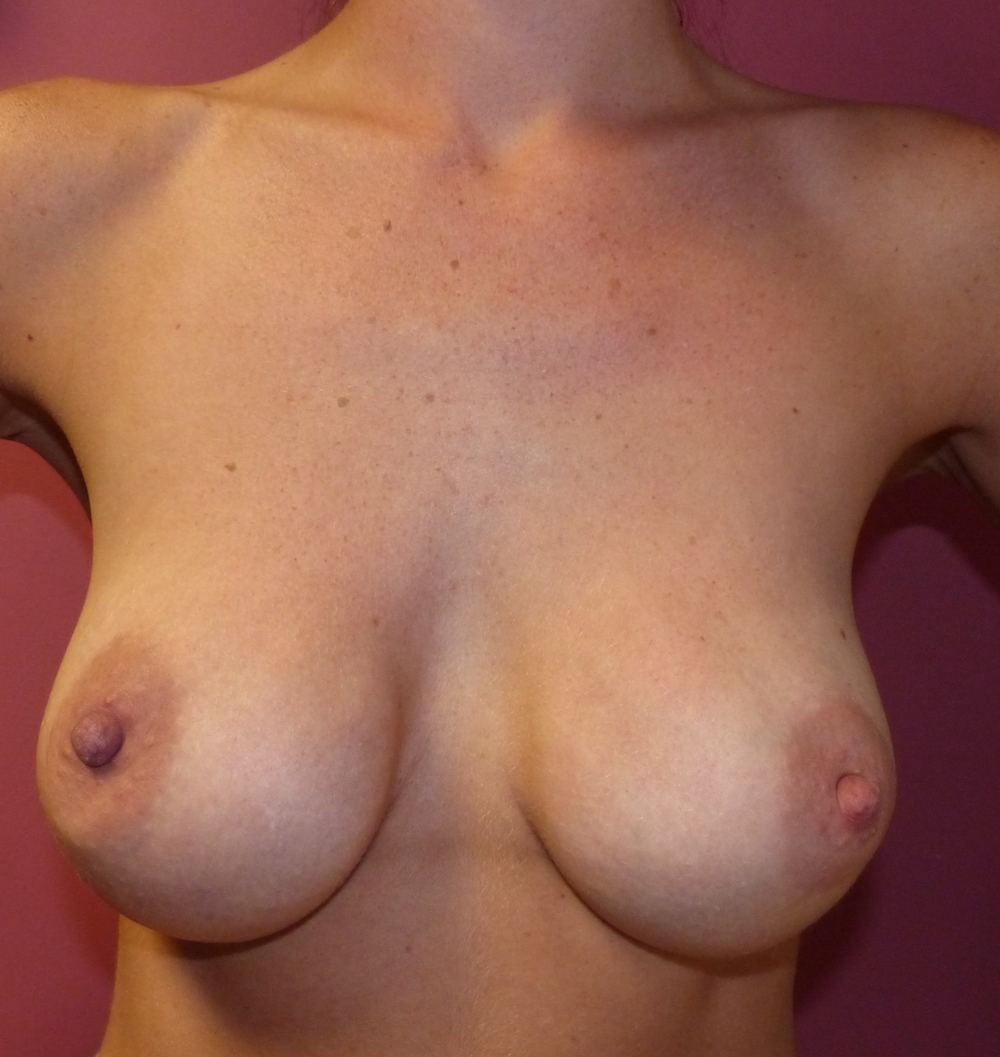
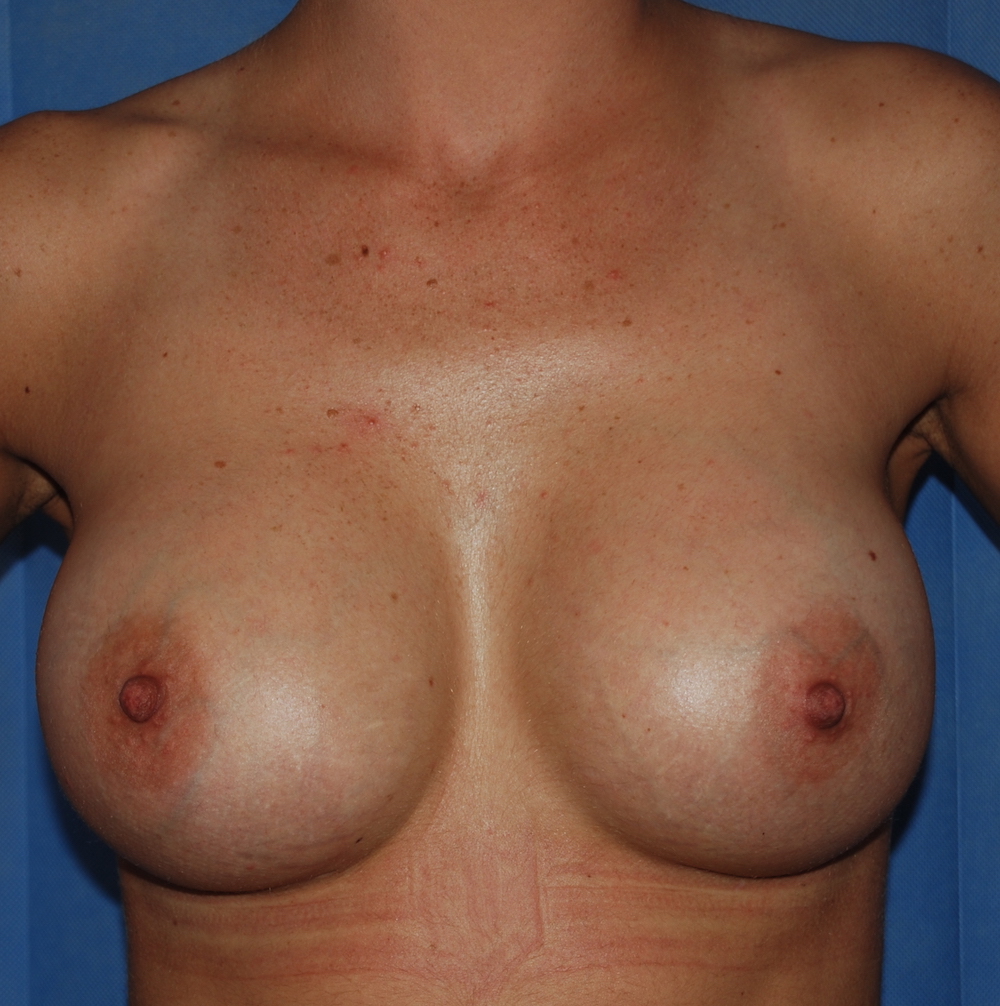
Both sides implant exchange to improve texture, shape and symmetry.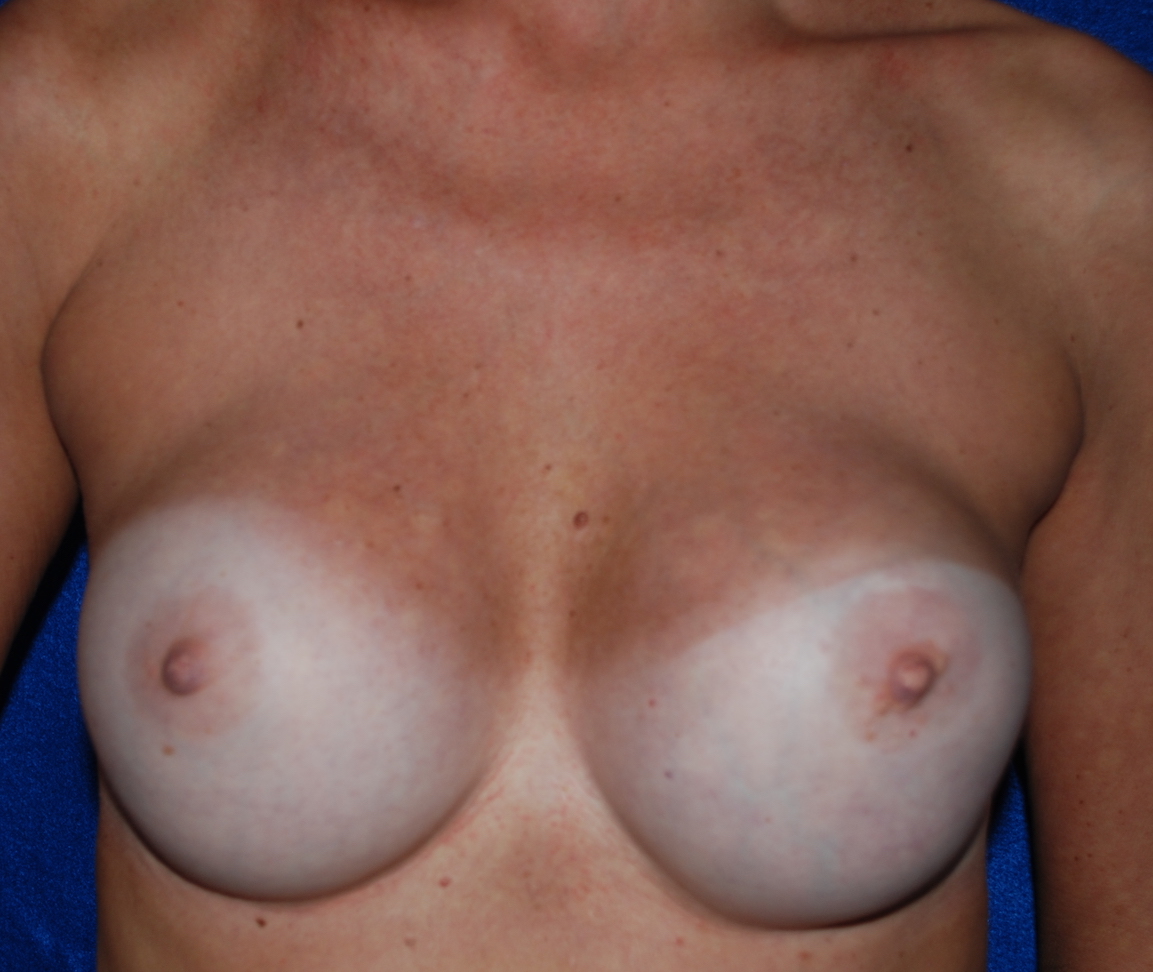
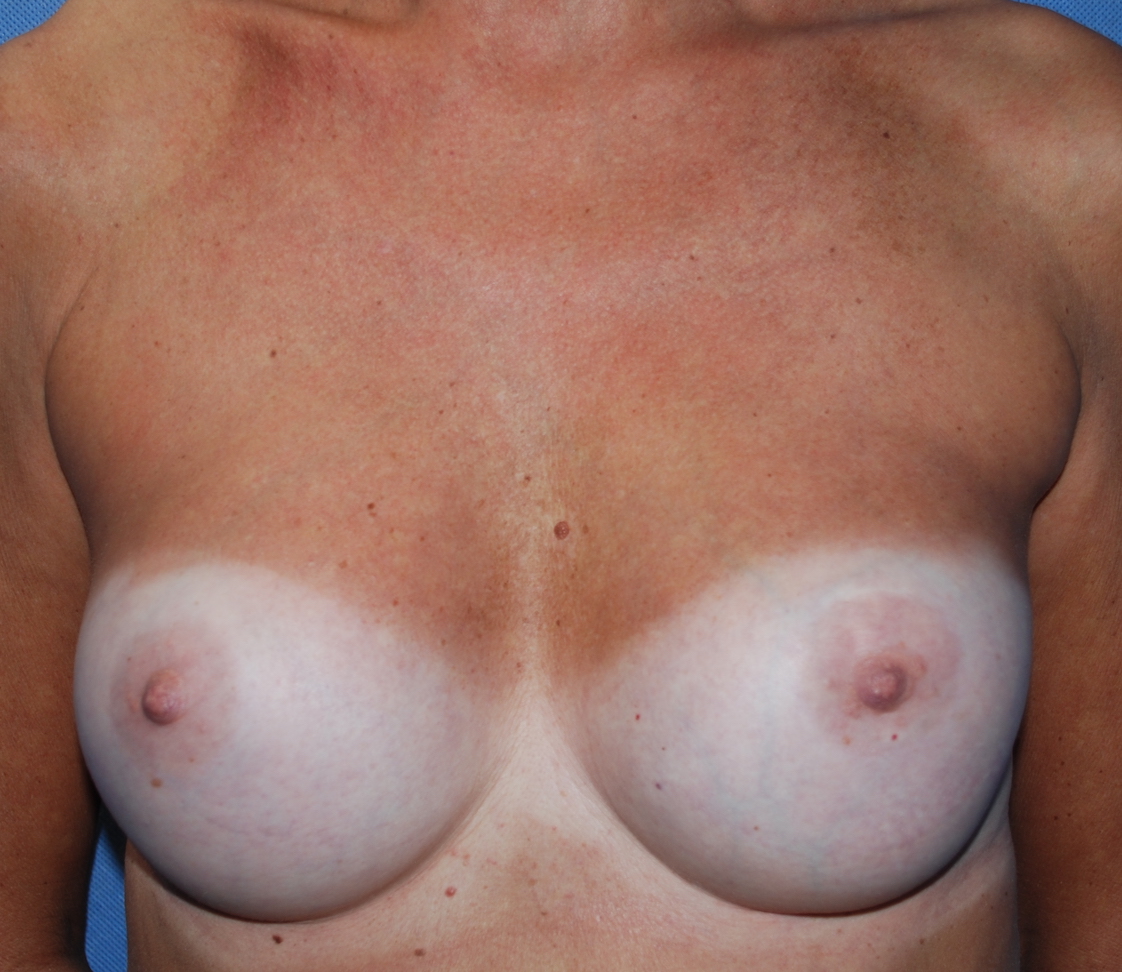
260 cc round implants under-breast with visible wrinkles, poor texture and shape: 'grade 3 capsule'. Capsulectomy and exchange for 335cc tear-drop implants under-muscle shown at 3 months post-op.
